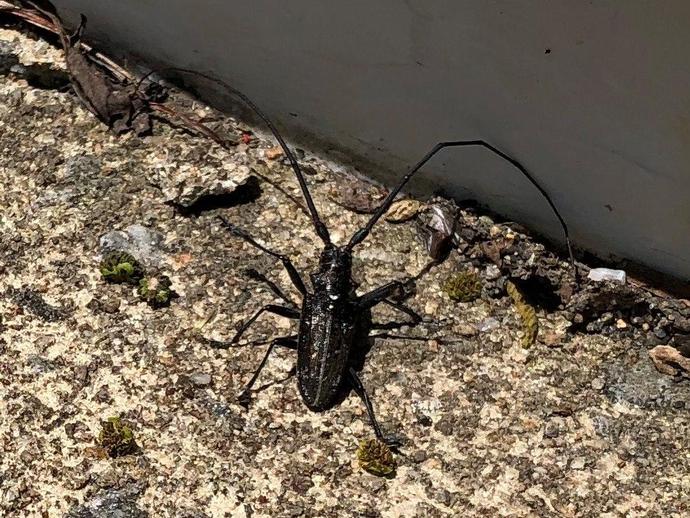March 13, 2021
We're reaching into the archives for today's #BenInNature update presented by our friends at Carter Bank & Trust! The following post was originally published on June 1, 2020.
This is Monochamus scutellatus, commonly known as the white-spotted sawyer beetle. Sawyer beetles are pretty hard to miss; in male beetles, the antennae can be twice as long as the body!
These beetles lay their eggs in dead or dying pine and spruce trees. The larvae burrow into the bark and feed on the wood until they emerge as adults, which can take between one and four years.
Because they require dead or dying trees to complete their life cycle, white-spotted sawyer beetles thrive in forests that have experienced fires; in fact, the more severe the fire, the more abundant the beetles! The way that they locate suitable forests is pretty clever. Scientists have determined that many sawyer beetles within the genus Monochamus find appropriate habitats by picking up the pheromones of bark beetles, which have similar requirements to sawyer beetles. Basically, they save themselves a lot of time and hard work by letting bark beetles do the heavy lifting for them! It reminds me of some folks that I had to do group projects with in college...
Thank you to Dr. Art Evans for confirming this ID!
ABOUT #BenInNature
Social distancing can be difficult, but it presents a great opportunity to become reacquainted with nature. In this series of posts, Administrator of Science Ben Williams ventures outdoors to record a snapshot of the unique sights that can be found in the natural world. New updates are posted Monday - Friday, with previous posts highlighted on the weekends. This series of posts is made possible thanks to the support of VMNH Corporate Partner Carter Bank & Trust (www.cbtcares.com).
NATURE PHOTO IDENTIFICATIONS
If you discover something in nature that you would like help identifying, be sure to message us right here on Facebook with a picture (please include location and date of picture) and we'll have our experts help you identify it!

 Hours & Admissions
Hours & Admissions Directions
Directions

